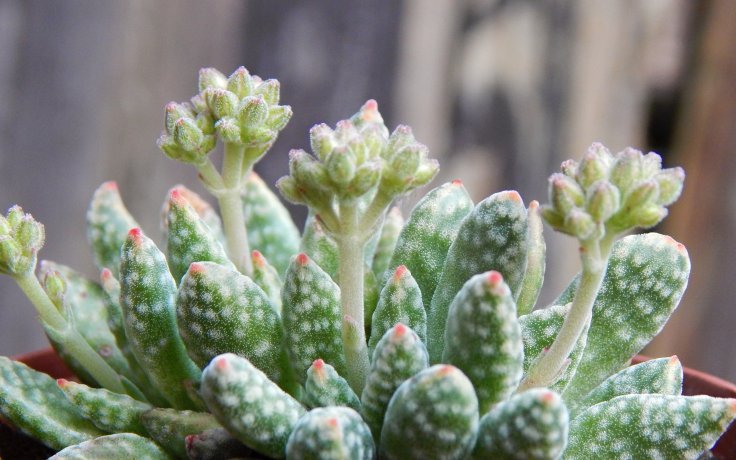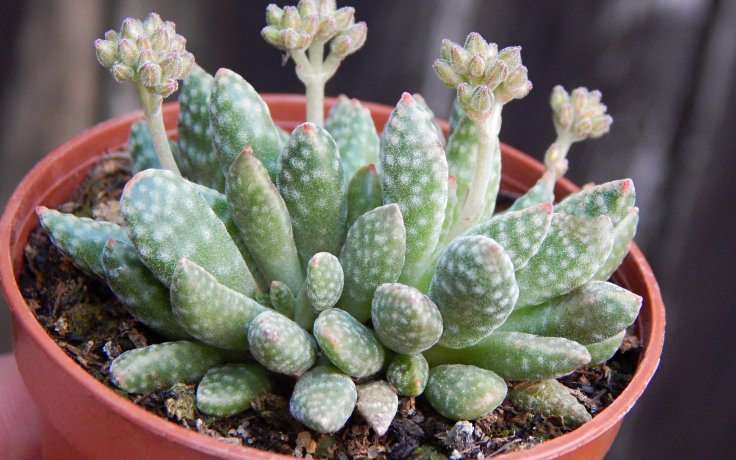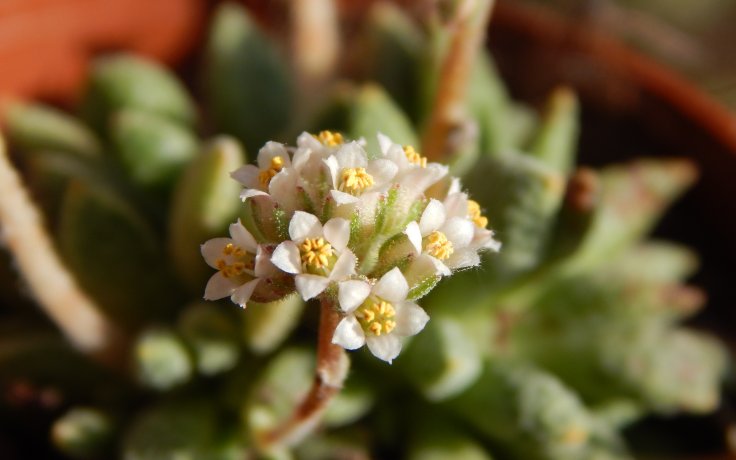- Home
- Succulents
- Crassula
- Crassula ausensis ssp. titanopsis





Crassula ausensis ssp. titanopsis
Place in a sunny position.
Water every few days after the substrate has dried out. Reduce watering in winter. It does not like waterlogging.
Can tolerate down to -3.9 °C in the short term. However, the plant is not hardy.
The succulent was described by the Czech botanist Mr Pavelka. He discovered it on his journey through Africa and later published an article about it in the magazine Cacti. He derived the name titanopsis from its similarity to the genus Titanopsis.
Crassula ausensis ssp. titanopsis comes from southern Namibia. This tiny gem was first described by the Czech botanist Pavelka in Cactusy magazine, 33rd edition in 1998. During his trip to Namibia in 1996, he came across this unusual plant growing in narrow crevices in quartzite rocks near the town of Grunau. He was very intrigued by its appearance and, because of its similarity to the genus Titanopsis, decided to describe it as a new subspecies of Crassula ausensis.
The miniature plant produces attractive clusters of small, stemless rosettes. The ovate leaves turn green to grey-green and are covered with transparent tufted hairs. These are most noticeable around the stomata. The top of the leaves often turn rusty orange to red. The leaves grow to about 2 cm long and up to 1.2 cm wide. Clusters of rosettes can reach up to 10 cm in diameter.
Small, white flowers usually appear from late autumn to early winter. The flower stalk can reach a height of up to 5 cm.
It is a relatively small succulent that does not need to be fertilised. If we are careful about waterlogging, this plant will last for many years in our homes. It will be a nice reminder that the Czechs did not only come up with the word robot, but also contributed to the exploration of the succulent kingdom.